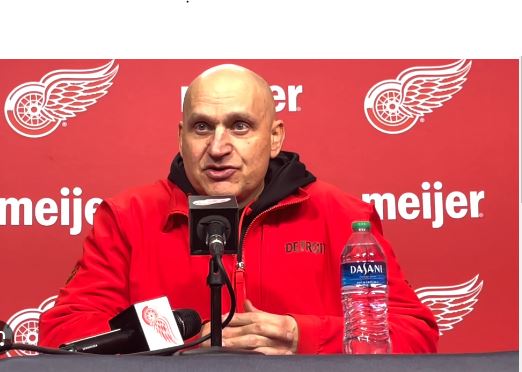A recent trade pitch has stirred up speculation, suggesting that the Detroit Red Wings could acquire a forward with a hefty $30 million contract. This potential move would significantly impact both the team’s roster and salary cap, as they look to bolster their lineup with a high-caliber player.
The Red Wings, currently in a rebuilding phase, have been seeking ways to add star power and depth to their roster. Acquiring a forward with a $30 million contract would indicate a serious commitment to accelerating their competitive timeline. However, such a move comes with substantial financial implications, which could affect the team’s ability to make additional moves or retain key players in the future.
The identity of the forward in question hasn’t been disclosed, but the speculation alone has fans and analysts debating the merits of taking on such a large contract. While the addition of a top-tier forward could elevate the Red Wings’ performance on the ice, it also raises concerns about the long-term flexibility of the team’s salary cap.
This trade pitch reflects the ongoing discussions within the NHL about balancing talent acquisition with financial sustainability. For the Red Wings, the decision to pursue such a trade would require careful consideration of both the immediate benefits and the potential risks down the line.
When considering a trade pitch that involves the Detroit Red Wings acquiring a forward with a $30 million contract, cap space becomes a critical factor. The Red Wings currently have some flexibility in their cap situation, but taking on such a substantial contract could have significant repercussions.
### Current Cap Situation
As of now, the Red Wings have some room under the salary cap, giving them the ability to make moves. However, acquiring a player with a $30 million contract (which typically refers to the total value over several years, not a single season) would substantially eat into their available cap space. This could limit their ability to sign or extend other key players, make additional trades, or address other roster needs.
### Impact of the $30 Million Contract
The forward’s $30 million contract could be spread out over several years, but the annual average value (AAV) of that contract would directly hit the Red Wings’ cap each season. For example, if the contract has three years remaining at $10 million per year, that’s $10 million added to their cap hit annually.
### Risks and Considerations
1. **Long-Term Flexibility**: Committing to a high cap hit could restrict the Red Wings’ flexibility in future offseasons. They would need to be cautious about other long-term commitments, especially with younger players who may need new contracts.
2. **Retaining Key Players**: If the Red Wings are locked into a hefty contract, it could affect their ability to re-sign emerging stars or veterans whose contracts are expiring.
3. **Salary Cap Projections**: The NHL salary cap is expected to rise in the coming years, which could provide some relief. However, this increase might not be enough to offset the financial burden of a $30 million contract without careful planning.
### Possible Solutions
– **Salary Retention**: The Red Wings could negotiate for the trading team to retain a portion of the salary, reducing the cap hit they would need to take on.
– **Roster Moves**: They might also look to offload other contracts to create additional cap space, either by trading players or buying out contracts.
– **Cap Relief from LTIR**: If any players are on long-term injured reserve (LTIR), this could provide some temporary cap relief, although it’s not a sustainable long-term strategy.
### Conclusion
The Red Wings would need to weigh the benefits of acquiring a top-tier forward against the potential cap constraints it would impose. While adding a $30 million player could significantly improve their roster, it also comes with financial risks that could limit their ability to build a balanced and competitive team over the long haul. Careful management of the cap and strategic planning would be essential to making such a trade work in their favor.

